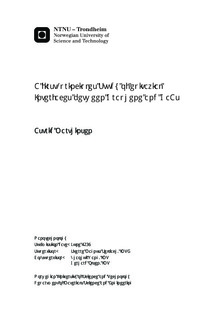A first-principles Study of epitaxial Interfaces between Graphene and GaAs
Master thesis
Permanent lenke
http://hdl.handle.net/11250/249519Utgivelsesdato
2014Metadata
Vis full innførselSamlinger
Sammendrag
Epitaxial interfaces between graphene and GaAs(111) have been investigated through a first-principles study using density functional theory (DFT). The GaAs(111) surface at the interface is assumed to be 2x2 reconstructed with Ga vacancies. Three different relative phase orientations between the GaAs(111) surface and graphene have been studied; 0deg, 16.1deg and 30deg, respectively, where three translations of the 0deg configuration have been considered. Within the three considered epitaxial phase orientations, the GaAs phase is strained in the (111) plane to accommodate a lattice mismatch of 6.3%, 10% and -8.2% in the 0deg, 16.1deg and 30deg orientations, respectively. Biaxial straining of bulk GaAs has been studied, both in the zincblende (ZB) phase ((111) plane) and in the meta-stable wurtzite (WZ) phase ((0001) plane). The relative stabilities of the two phases are found to depend on the degree of strain. Biaxial straining of GaAs(111) surfaces have also been investigated. The surface reconstruction energy is highly dependent on the degree of strain for GaAs(111)-2x2 reconstructed surfaces. The interactions between GaAs and graphene at the interface have been studied by two different exchange-correlation functionals: The semi-local GGA functional PBEsol, and the van der Waals (vdW) functional optPBE. The latter is found to yield a significantly stronger interaction energy, which signifies a substantial vdW contribution to the interactions at the GaAs/graphene interface. The interaction energy between GaAs and graphene is estimated for the five configurations considered. The estimates vary in the range 0.24-0.31 J/m^2. The strongest interaction energy is found for the 30deg configuration.
